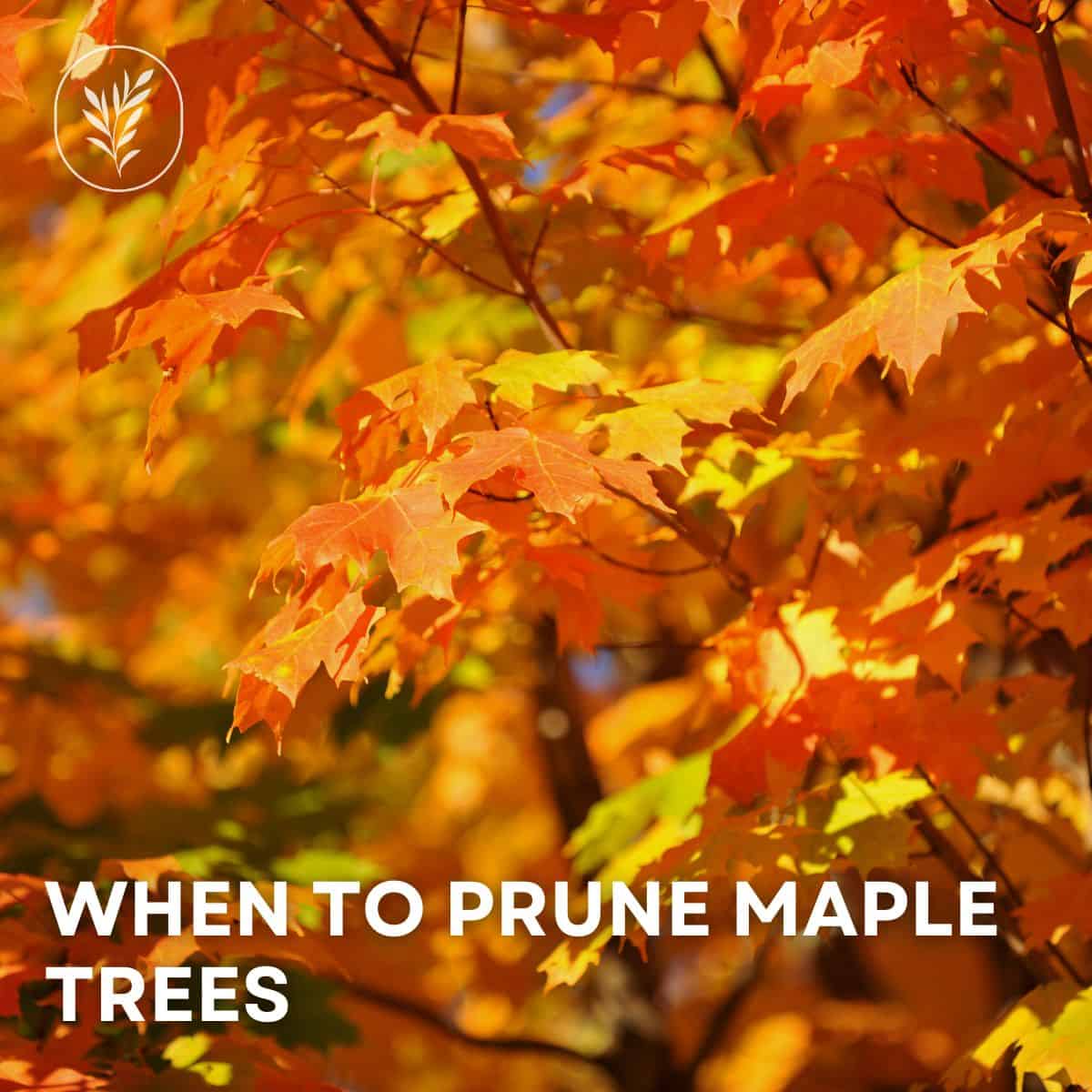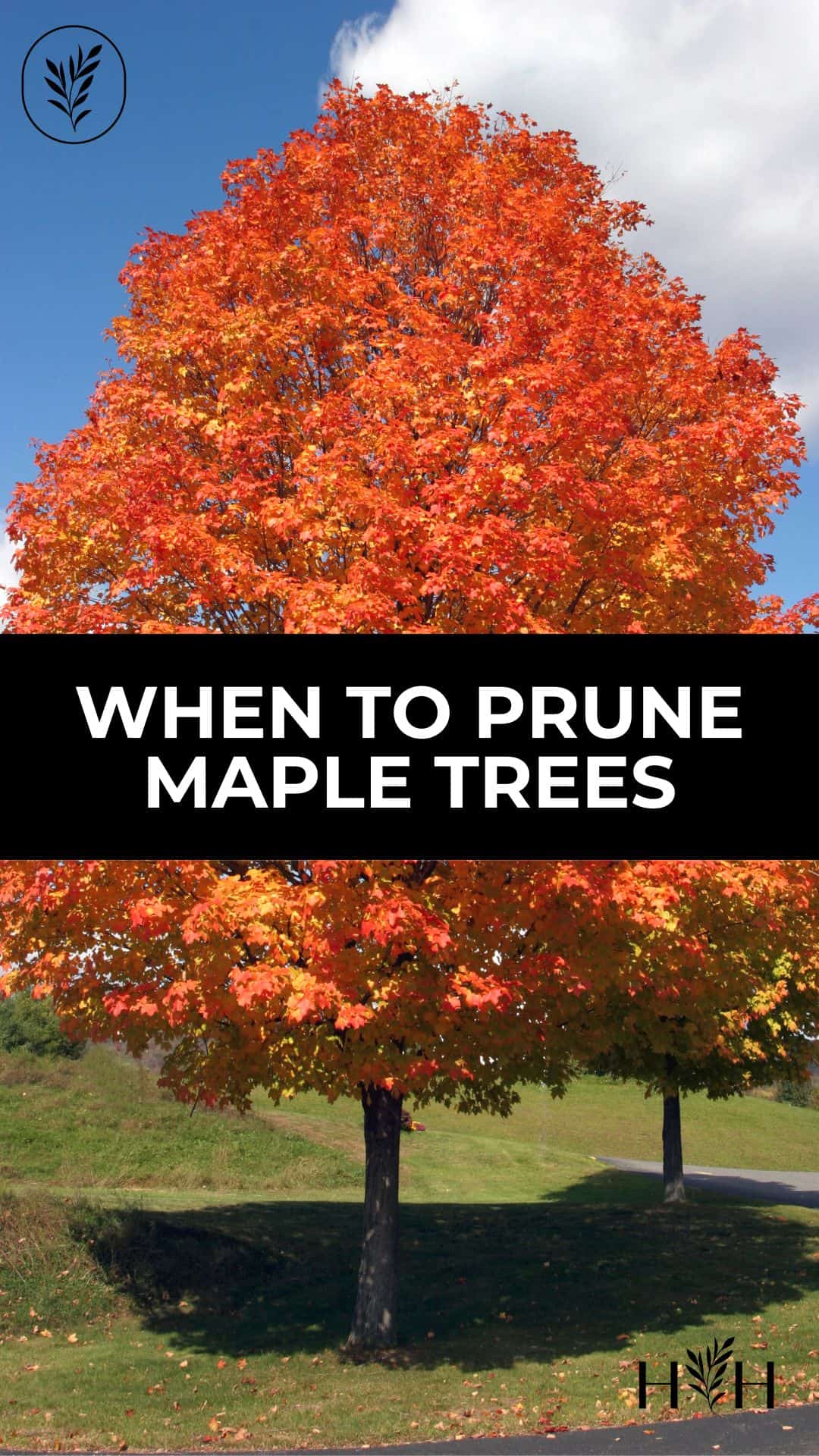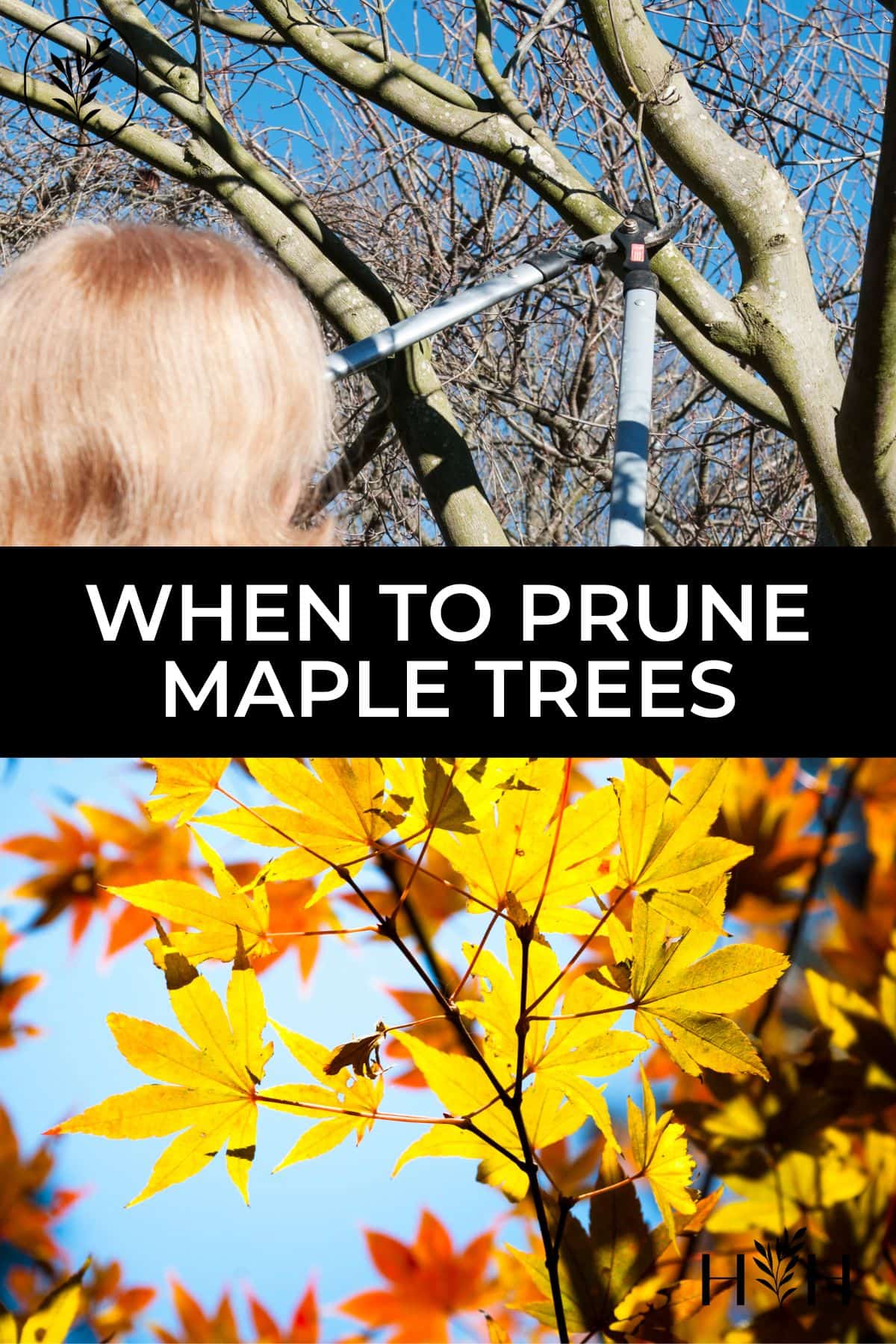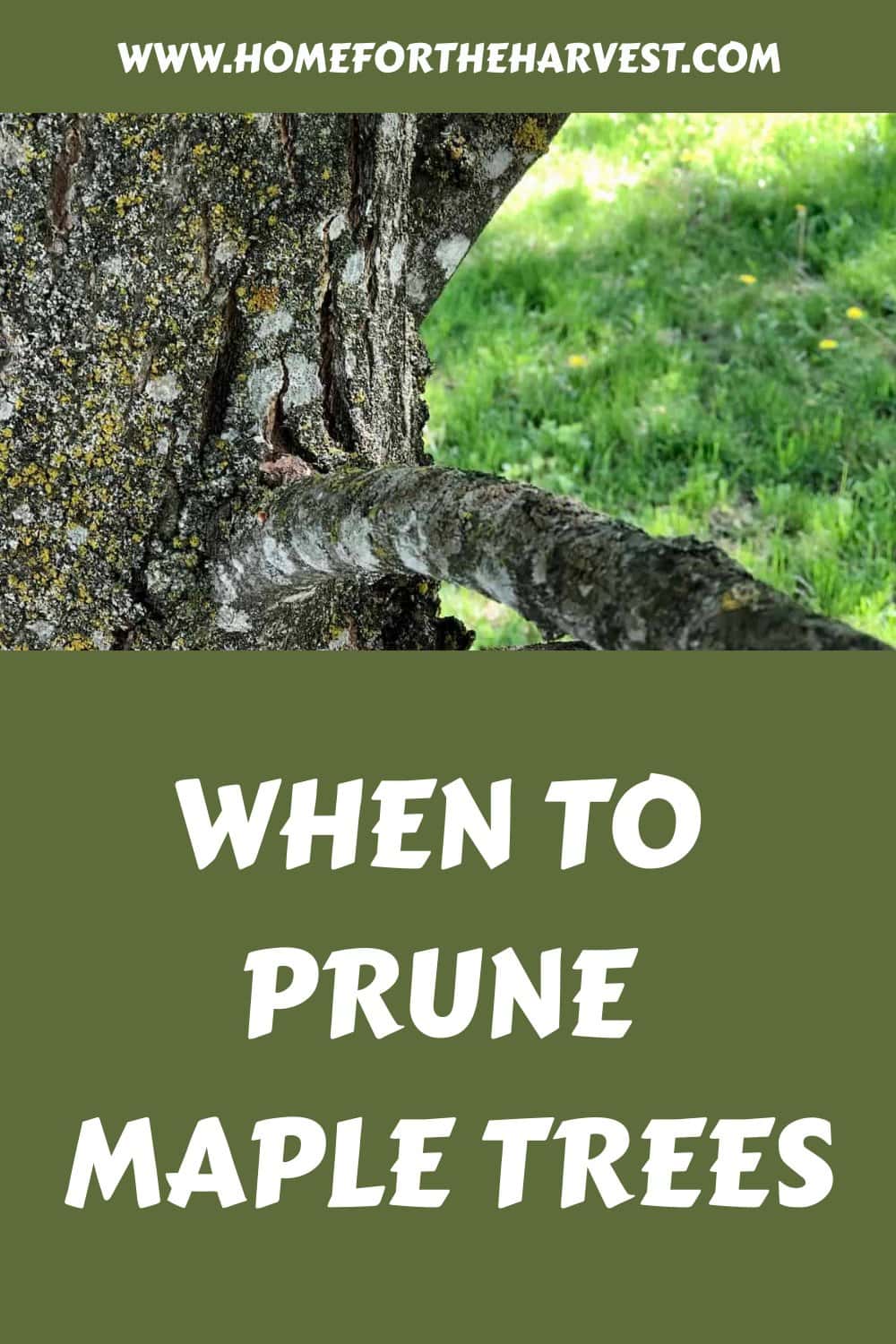Wondering when to prune maple trees? I was too. Here’s what I’ve found over the last few years of learning from experts and caring for my own maple trees.
Branches on a maple tree that are dead, dying, damaged, or diseased should be removed (ASAP) at any time of year. Pruning a maple tree to create a nice shape and structure is best done in the late winter/early spring when the tree is dormant and the branch framework is visible. Pruning later in the spring and summer is also possible, but pruning of healthy branches should be avoided in the fall.
There is lots to learn about when to prune maple trees. Read on to learn when and why to prune the maple trees in your yard.
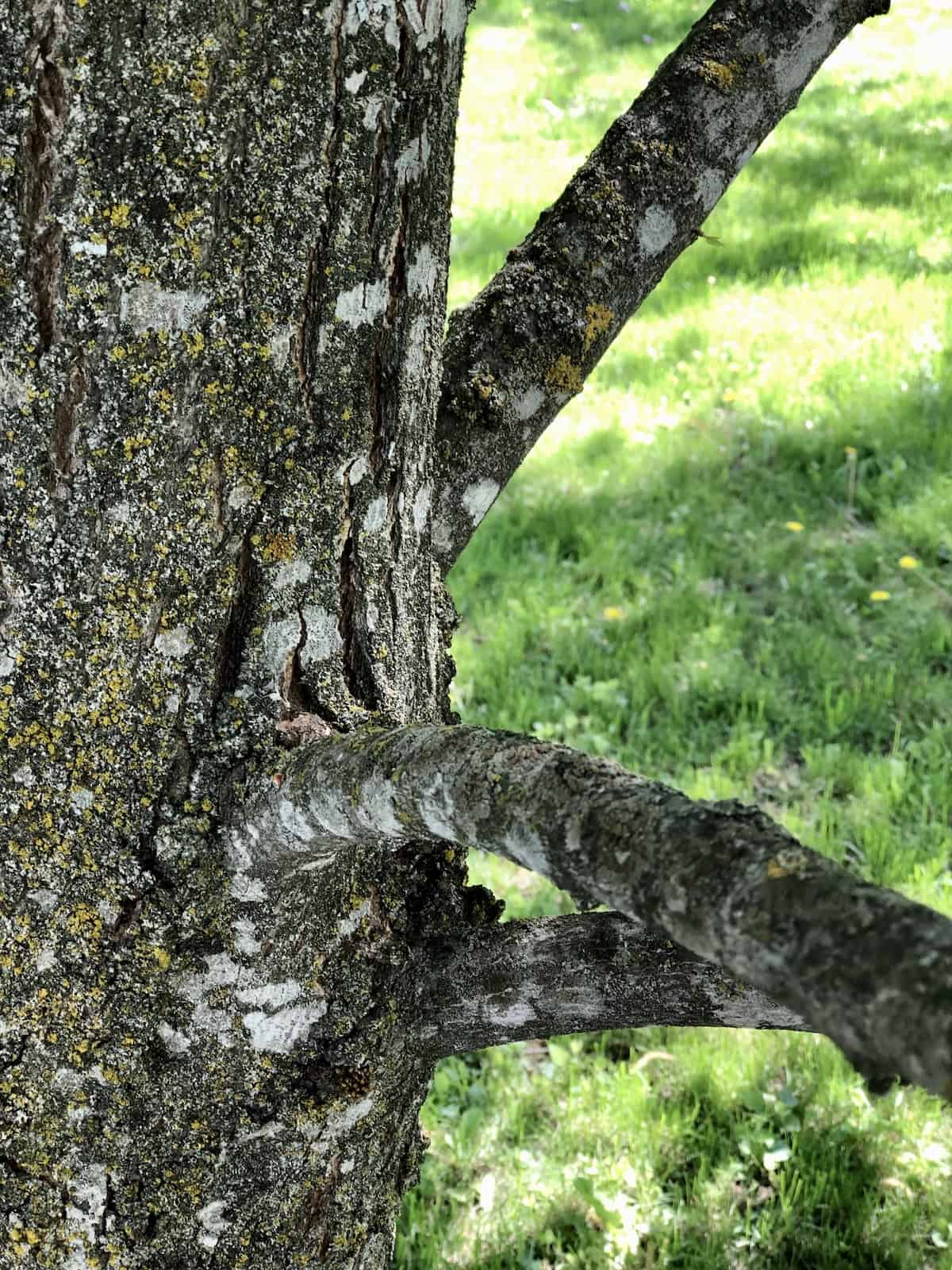
When to prune maple trees: What to prune off any time of year
Maple trees may be pruned at any time of the year if the focus is on branches that are dead, dying, damaged, or diseased. These branches should be removed from the tree as soon as is practicable. Also remove any branches that present a safety hazard, such as branches in the way of pathways or other hazardous situations.
TIP: it is always advisable to wear a proper protective gear when pruning. This includes hand protection, eye protection, long pants and long sleeves when pruning your maple trees.
Prune during late winter or early spring
Most experts advise that pruning maple trees is best done during late winter or early spring. The trees are dormant during this time and less likely to be harmed by pruning cuts. The tree also has no leaves during this season, making the structural branch framework of the tree visible to the eye. If you can only choose one time of year when to prune maple trees, choose the period after the coldest temperatures of winter have passed but before the early-spring blossom.
“A note about timing when pruning deciduous trees: With few exceptions, the ideal time is late winter or early spring, just before growth begins.”
The Pruning Book, by Lee Reich
Early spring is the time when many maple trees are being tapped in order to collect sap for maple syrup. Sap does tend to bleed from pruning cuts as temperatures warm, but this is not necessarily a bad thing for the tree. In addition to maple syrup, the sap is also useful as a food source for some wilderness creatures.
“Plants such as maples, birches, grapes, and kiwis bleed sap profusely if pruned just as their buds are swelling in spring. The way to avoid this loss of sap is to prune either in winter, when the plants are fully dormant, or in the spring, after growth is underway. The sap loss actually does no harm to the plants, so rushing or delaying pruning on this account is not for your plant’s health but so that you can rest easy.”
The Pruning Book, by Lee Reich
Prune during late spring
As a rule of thumb, pruning during late spring should be done after the tree blossoms. This is a busy time for garden pests and diseases, and trimming during late spring can leave cuts vulnerable to illness and insect infestation. Nonetheless, pruning during this time of the year can be beneficial as long as the purpose of your pruning is for safety and aesthetic purposes only.
TIP: make sure to sanitize your pruning tools in order to prevent various diseases from spreading, especially if you’re dealing with multiple trees.
It is also important to be aware that pruning for more than 15% of your maple tree per year can bring more harm than benefit to your plant. Moreover, it is advisable to prune little by little each year, rather than pruning a lot in one go.
“Young maple bark is susceptible to sunburn, so make sure to leave those temporary branches for shade, even if the tree will eventually be high-headed.”
The Pruning Book, by Lee Reich
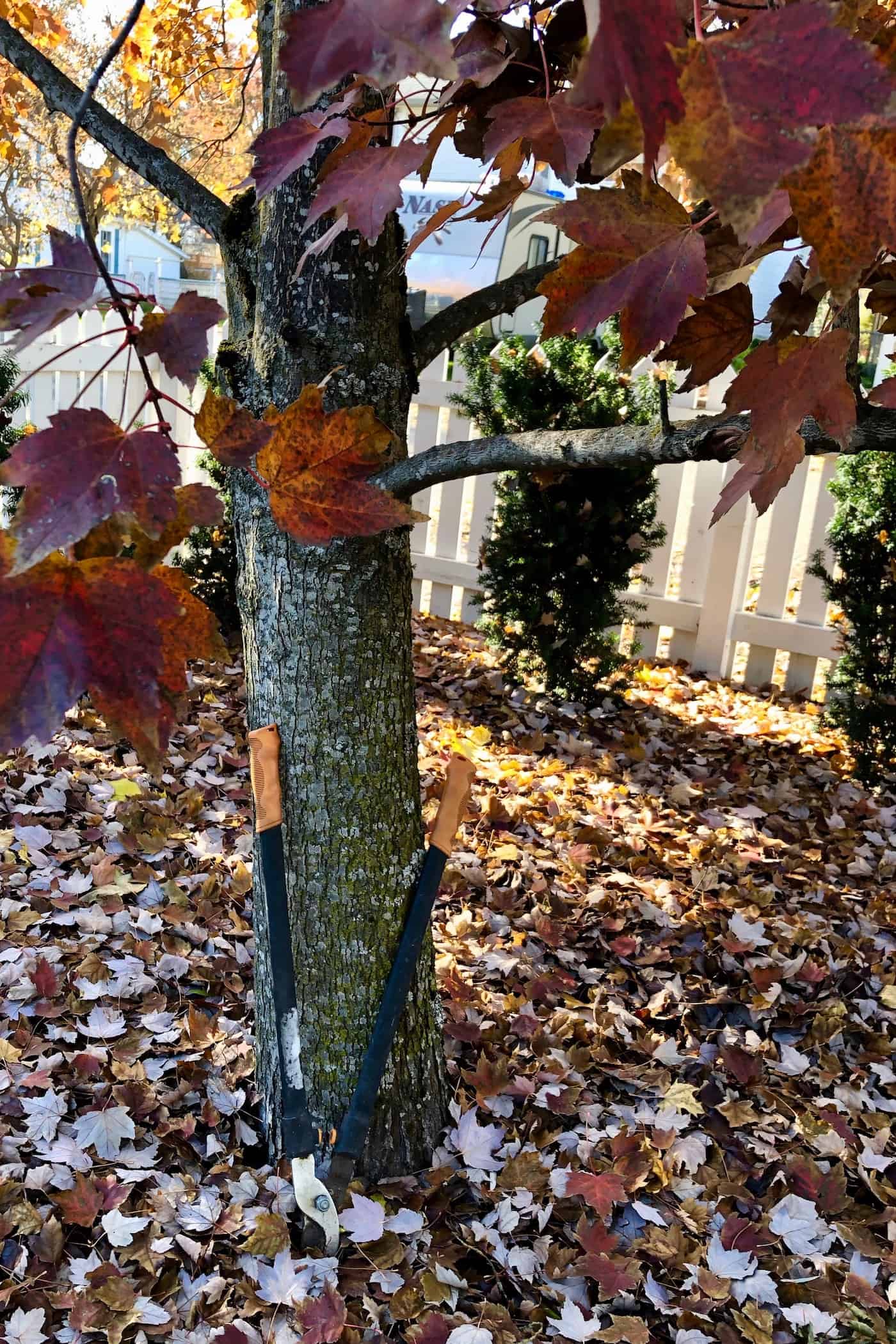
TIP: while young maple trees can be easily pruned using a hand saw, loppers, or pruners, mature and tall maple trees are best pruned by a professional arborist.
Avoid pruning maple trees in the fall
Pruning during the fall can cause more harm than benefit to your maple tree. Pruning during fall is not recommended unless the branches of your maple tree are dead, damaged, diseased, or dying. Avoiding fall pruning is perhaps the most important guideline to remember while learning when to prune maple trees.
The primary reason why pruning at this time of the year is the worst one is because it stimulates plant growth right when your maple tree should be thinking about going dormant for the winter. This is a time when the tree should be ceasing activity and preparing for cold temperatures rather than putting on tender new growth that can be easily harmed by the cold. Let the tree rest and prune it after the coldest temperatures of winter have passed.


